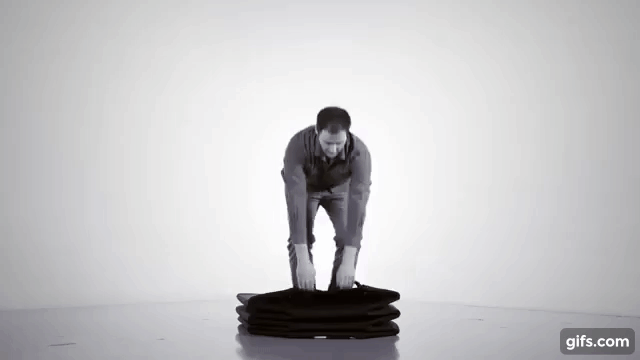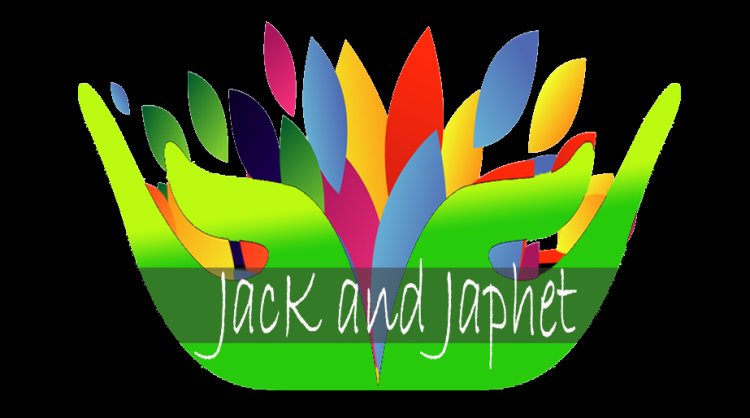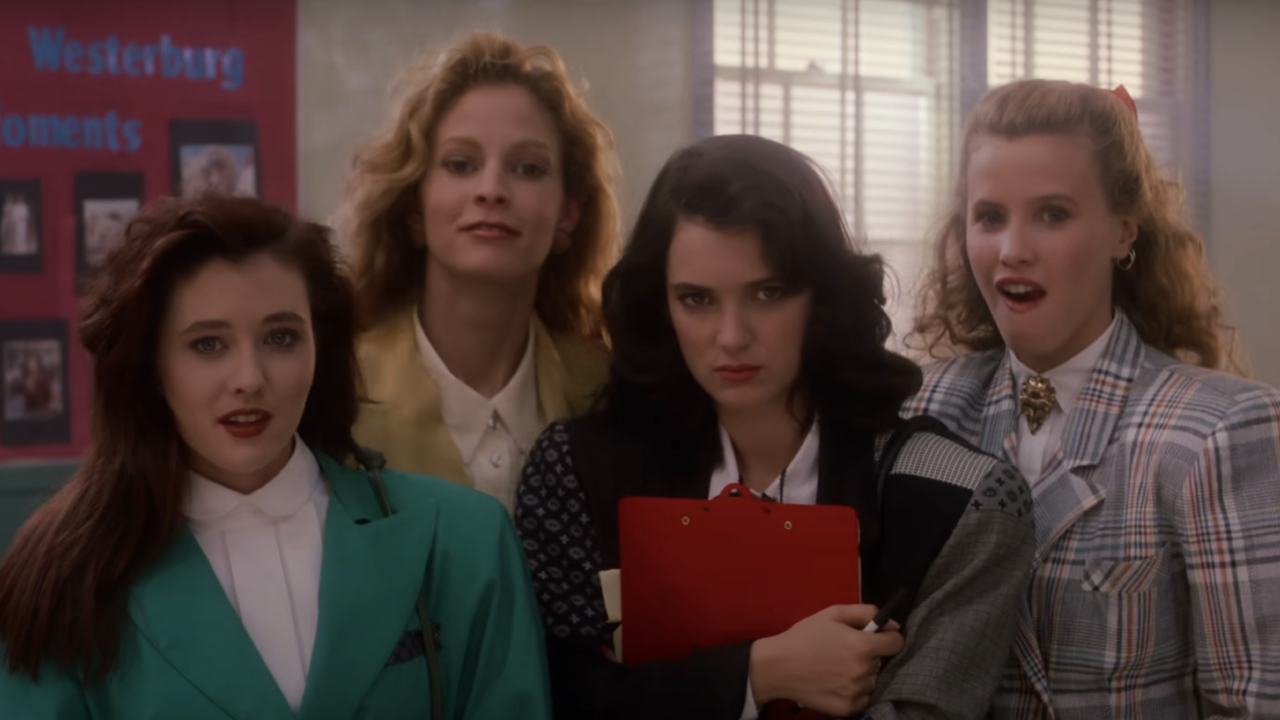Pat Garrett and Billy the Kid Ride Again with Criterion's 50th Anniversary Release
Sam Peckinpah’s “Pat Garrett and Billy the Kid” has about it an air of abeyance, of incompletion spurred by decades of mythology and rumor about its troubled production, contentious post-production, and the personal demons plaguing a director whose prickliness and battles with addiction have troubled considerations of his work and artistic legacy. Not helping is its confusion of cuts: a theatrical cut trimming twenty minutes from Peckinpah’s second preview cut (released on VHS in 1988), a television cut, and then a “special edition” cut in 2005 jigsawed together by editor, writer and Peckinpah scholar Paul Seydor according to what he deduced a director nicknamed “Bloody Sam” and not just for his onscreen depictions of violence, would have wanted given the time and resources. (Another version, edited by Roger Spottiswoode upon Ted Turner’s purchase of the MGM library screened only once at the Taos Talking Pictures Festival in 1995, has been collected in previous DVD editions.) Criterion’s handsome new release of “Pat Garrett and Billy the Kid” includes now another cut of the film, overseen by both Seydor and Spottiswoode, that they call the “50th Anniversary” cut and describe as an enhancement of the 2005 version with additional scenes and a few adjusted beats. It’s a lot to keep track of. Frankly - I recommend you watch all three versions included in this collection (Theatrical, Preview and 50th Anniversary). It’s only in the consumption of all of them that the nuances of the meal of the film emerges. Not unlike the work of contemporary (in time and temperament) Werner Herzog, the stories of the making of Peckinpah’s films hang around their necks like proverbial albatross. He curses them with his disdain. Oft-told tales of the film include the Satanic studio head Jim Aubrey, who terrified underlings called “The Smiling Cobra” at open war with Peckinpah’s belligerence and refusal to play according to any rules; Peckinpah’s departure from the editing bay with Spottiswoode, never to touch the film again; his theft of a 35mm print of his own final cut of the film that he would show to friends and confidantes as proof of what the suits had done to his baby. The truth of Peckinpah’s departure from the project, of its arduous shoot plagued by illnesses and Peckinpah’s hospitalization mid-production, is hazier as truth tends to be. Sensational stories like Peckinpah pissing on the screen during a preview screening have colored, inevitably, the way the work has been received. How could it not? Ironically, an admirer liking the first, unauthorized version of “Pat Garrett and Billy the Kid” - a film that has been so violently, so biologically rejected by its creator - feels like a betrayal of the creator and a capitulation to a corporate monoculture we as Americans have been bred to adore and despise simultaneously. Add to this that Peckinpah had a habit of scapegoating producers - and this is pure speculation here - to escape ultimate responsibility for the failure of projects that meant so much to him that he couldn’t bear to leave an imperfect man like himself in charge of their final shape. I also think he might have been ashamed of being an artist rather than the kind of two-fisted, hard-drinking man of action he emulated in his personal life and sanctified through his art. His stuff was always more complicated than just a celebration of machismo, though, wasn’t it? In fact, the enduring and growing admiration for Peckinpah’s work has a lot to do with how his films are steeped in introspection and harsh criticism of, of all things, masculinity. He complained that not a one of his films had been released unmolested in the United States. In that way, he reminds me of Orson Welles, another genius who found himself at the center of catastrophes that must in some way be of his own design. As Americans, we admire iconoclasts even as we bow our heads for our monthly wage. We sanctify outlaws and romanticize serial killers as we build a police state and preside over the most incarcerated population in the developed world. As much as Peckinpah was difficult for others, he was a contradiction to himself. People close to him describe him as volatile in moments, disarmingly generous and kind in others. Walter Hill cried when he told me about learning of his mentor’s death. Sam lived in polarities. In a Playboy interview in 1972 (an interview as notorious as it is fascinating for its blunt interpretation of human cultural evolution), in response to a question about the accuracy of an anecdote about John Huston abandoning the editing of “The Red Badge of Courage,” Peckinpah says “Well, even if he did run, I wouldn’t blame him at all. This isn’t a game. There’s too much at stake. And the woods are full of killers, all sizes, all colors… a director has to deal with a whole world absolutely teeming with mediocrities, jackals, hangers-on and just plain killers.” Until the end, I think Peckinpah wanted to be righteous but was


Sam Peckinpah’s “Pat Garrett and Billy the Kid” has about it an air of abeyance, of incompletion spurred by decades of mythology and rumor about its troubled production, contentious post-production, and the personal demons plaguing a director whose prickliness and battles with addiction have troubled considerations of his work and artistic legacy. Not helping is its confusion of cuts: a theatrical cut trimming twenty minutes from Peckinpah’s second preview cut (released on VHS in 1988), a television cut, and then a “special edition” cut in 2005 jigsawed together by editor, writer and Peckinpah scholar Paul Seydor according to what he deduced a director nicknamed “Bloody Sam” and not just for his onscreen depictions of violence, would have wanted given the time and resources. (Another version, edited by Roger Spottiswoode upon Ted Turner’s purchase of the MGM library screened only once at the Taos Talking Pictures Festival in 1995, has been collected in previous DVD editions.)
Criterion’s handsome new release of “Pat Garrett and Billy the Kid” includes now another cut of the film, overseen by both Seydor and Spottiswoode, that they call the “50th Anniversary” cut and describe as an enhancement of the 2005 version with additional scenes and a few adjusted beats. It’s a lot to keep track of. Frankly - I recommend you watch all three versions included in this collection (Theatrical, Preview and 50th Anniversary). It’s only in the consumption of all of them that the nuances of the meal of the film emerges.
Not unlike the work of contemporary (in time and temperament) Werner Herzog, the stories of the making of Peckinpah’s films hang around their necks like proverbial albatross. He curses them with his disdain. Oft-told tales of the film include the Satanic studio head Jim Aubrey, who terrified underlings called “The Smiling Cobra” at open war with Peckinpah’s belligerence and refusal to play according to any rules; Peckinpah’s departure from the editing bay with Spottiswoode, never to touch the film again; his theft of a 35mm print of his own final cut of the film that he would show to friends and confidantes as proof of what the suits had done to his baby.

The truth of Peckinpah’s departure from the project, of its arduous shoot plagued by illnesses and Peckinpah’s hospitalization mid-production, is hazier as truth tends to be. Sensational stories like Peckinpah pissing on the screen during a preview screening have colored, inevitably, the way the work has been received. How could it not? Ironically, an admirer liking the first, unauthorized version of “Pat Garrett and Billy the Kid” - a film that has been so violently, so biologically rejected by its creator - feels like a betrayal of the creator and a capitulation to a corporate monoculture we as Americans have been bred to adore and despise simultaneously.
Add to this that Peckinpah had a habit of scapegoating producers - and this is pure speculation here - to escape ultimate responsibility for the failure of projects that meant so much to him that he couldn’t bear to leave an imperfect man like himself in charge of their final shape. I also think he might have been ashamed of being an artist rather than the kind of two-fisted, hard-drinking man of action he emulated in his personal life and sanctified through his art. His stuff was always more complicated than just a celebration of machismo, though, wasn’t it? In fact, the enduring and growing admiration for Peckinpah’s work has a lot to do with how his films are steeped in introspection and harsh criticism of, of all things, masculinity.
He complained that not a one of his films had been released unmolested in the United States. In that way, he reminds me of Orson Welles, another genius who found himself at the center of catastrophes that must in some way be of his own design. As Americans, we admire iconoclasts even as we bow our heads for our monthly wage. We sanctify outlaws and romanticize serial killers as we build a police state and preside over the most incarcerated population in the developed world. As much as Peckinpah was difficult for others, he was a contradiction to himself. People close to him describe him as volatile in moments, disarmingly generous and kind in others. Walter Hill cried when he told me about learning of his mentor’s death.
Sam lived in polarities. In a Playboy interview in 1972 (an interview as notorious as it is fascinating for its blunt interpretation of human cultural evolution), in response to a question about the accuracy of an anecdote about John Huston abandoning the editing of “The Red Badge of Courage,” Peckinpah says “Well, even if he did run, I wouldn’t blame him at all. This isn’t a game. There’s too much at stake. And the woods are full of killers, all sizes, all colors… a director has to deal with a whole world absolutely teeming with mediocrities, jackals, hangers-on and just plain killers.” Until the end, I think Peckinpah wanted to be righteous but was afraid he might be one of the killers. Rather than find out through a close consideration of the products of his own hand, he most often chose to run.
At the time of the Playboy interview, Peckinpah was married to his third wife, Joie - he had brought over his young editor Spottiswoode from “Straw Dogs” to work on “Junior Bonner” and “The Getaway.” He had already gained a reputation for being an unreliable, abusive drunk who made it a habit of firing at least a third of every crew with whom he ever worked. I asked Spottiswoode how he avoided being fired by Sam. He said it was a combination of being young and stupid and possessing a certain insouciance he wielded because he expected to be fired. He approached Sam with the courage of the damned, and Sam was always on the side of the Wild One. Sam was a genius (James Coburn said he was that at least “three hours a day, sometimes more depending on how much he drank”), a poet of motion and manhood, and he was polecat mean with a particular gift for identifying the weaknesses and fears in others and using them to reassure his own insecurities.

I have always thought of “Pat Garrett and Billy the Kid” in the same context as Joseph Conrad’s "The Heart of Darkness" and Ridley Scott’s “Blade Runner”; the former for its narrative structure of traveling “upstream” to kill a man made mad by his position in a dehumanized and increasingly colonized world; the other for its own Schrödinger's Cat conundrum of existing simultaneously in multiple, sometimes tonally inconsistent, versions. In Conrad, our hero Marlow explains the abomination of colonialism as how one's “strength is just an accident arising from the weakness of others.” Marlow tells the story of his quest to find and murder the mad colonial leader Kurtz, who has abandoned his mission as a flashback. Marlow romanticizes his role as captain of an ivory trading ship as the product of a childhood obsessed by the “blank spaces” on maps.
In “Pat Garrett and Billy the Kid,” Billy (Kris Kristofferson) says this of why he and Pat Garrett (James Coburn) are no longer friends: “He signed himself over to Chisum and every other goddamned landowner that’s trying to put a fence around this country.” Billy is Kurtz, who has “gone native” in a romanticized notion of an untameable frontier at odds with the cattle baron John Chisum and his steady co-opting of every man, including the once-wild Garrett, with a price to put a stake on every parcel of land needing a border.
This film and Peckinpah’s next, “Bring Me the Head of Alfredo Garcia” are to me the greatest autobiographical confessions committed to American film, greater even than Hitchcock’s “Vertigo” and Polanski’s “Rosemary’s Baby”. Together, they form a Confessions of Saint Augustine told as an elegy for America’s childhood and wild adolescence, emerging only with extraordinary difficulty into a kind of maturity after a long period of unrelieved sin. By the time Peckinpah was shooting “Pat Garrett and Billy the Kid” on location in Durango, Mexico, spooling miles of film on endless takes and setups to spend his nights and mornings in cantinas, his marriage to Joie had ended in violence after only four months, and he was harried and paranoid.
Giving himself over to his vices (he eventually switched from alcohol to cocaine, he said, because he hoped it would be better for his body), he was in a ferocious state when the script by Rudy Wurlitzer came to him. Wurlitzer had written it for Monte Hellman, but Hellman had his own masterpiece (“Cockfighter”) to pursue. The piece was attractive to Peckinpah probably because he saw it as a chance to address some of the disappointment over how his adaptation of Charles Neider’s "The Authentic Death of Hendry Jones" had been turned into “One-Eyed Jacks” and Brando’s vision of Billy the Kid as folk hero rather than outlaw murderer. Maybe because it was the product of two artists, Wurlitzer and Hellman, he had recently so admired for “Two-Lane Blacktop.”
In Peckinpah’s hands, the story shifted from a more traditional hunt to a dirge, a story of two dear friends who find themselves on opposite sides of inexorable social change. Both are doomed to die in the end, of course, Peckinpah’s Old West was emphatically no country for old men, but only one of them would die justified. (For his part, Wurlitzer excoriated the change in his prologue for a published version of his script.) Sam was Billy in his heart, but he knew deep down he was Pat. In that Playboy interview, he says, “I’m a whore. I go where I’m kicked. But I’m a very good whore.” He says it, I think, because he wants someone to argue with him, but no one ever does.
That sense of self-loathing for selling out - for mortgaging the fire and authenticity of youthful rebellion to earn a living and a place in polite society, is the tension that drove Peckinpah, the low man of high tastes, and drives “Pat Garrett and Billy the Kid,” too. The story of the piece is simplicity itself: Billy is told by his friend Pat that he has five days to leave the country. Pat has been hired on as a lawman and his first assignment is to ensure the area’s most notorious outlaw has been dispatched. Billy runs. Pat chases him down and kills him. The problem for Pat is that he’s aware of the compromises he’s made to his morality, and so dooms himself to live a life disappointed with himself. Not just for his betrayal of the compatriots he used to run around with in his youth, but in a real way for the assassination of himself as a kid.
When he kills Billy with a single shot, he turns to a mirrored reflection of himself and shoots it in the same spot. They’re the same person - the older and younger versions: the soulless opportunist and the untamed idealist he used to be. It never bothered me that both Coburn and Kristofferson are too old for their roles because what matters is that they could, credibly, appear to be removed by a generation from one another. In the system Garrett has sold himself to and helped to build, he’s doomed himself to live as a prisoner of regret and conscience.
In the opening of each version of the film (except the theatrical), we witness Garrett sometime in the future being ambushed and killed while riding on land he considers to be his. “Thought I told you not to run them sheep on my land,” he says, only to be told that it’s not his land according to law. “Shit. Goddamn law is ruining the country.” When reminded that Garrett was a representative of the law in the commission of the murder of his friend Billy, he loses his temper and then, soon after, his bitter, empty life. Peckinpah mirrors Garrett’s assassination with the slaughter of a row of chickens in a distant past, buried up to their necks, their heads used as shooting practice for Billy and a few of his compatriots. A younger Garrett arrives in this scene as the older version of himself breathes his last. Billy greets him warmly with a jab about how Pat’s a pretty good shot for a married (read: castrated) man.
The best version of the opening is found in the last time the director touched this film, Peckinpah’s Preview Cut. A master of the prologue, Peckinpah tells the entire subtext of his films there: the machine-noises playing under the herd of deer in “The Getaway;” the children torturing scorpions in “The Wild Bunch;” the blurred suggestion of a cellular biome in “Straw Dogs” (poached by Cronenberg’s “The Fly”); the home video porn of “The Osterman Weekend;” the gorgeous, evocative split-screens and picture-in-pictures detailing the life of a rodeo cowboy in “Junior Bonner,” and on and on. His films are laid out like a master’s thesis, opening with a precis of his piece that he will expand and poeticize through the body of his argument and defense.
In “Pat Garrett and Billy the Kid,” his prologue establishes both Pat Garrett and Billy the Kid as dumb animals waiting to be culled by forces they neither understand nor can predict - not that understanding or predicting the reasons and ways they’ll die would alter their fate in any way. They are characters at the whim of time, and their time grows short. Consequently, much of the dialogue in Wurlitzer’s gorgeous script revolves around ensuring people witness the deeds of giants so that they might repeat them to others so that audiences in the future might understand what made this country. How even there, in the heroic sowing of its verdant fields, are buried the violent, selfish, greedy seeds of its own destruction. Watch how he depicts children in his movies. In this one, a pack of them uses a noose on a gallows as a tire swing.
Peckinpah’s cut is hastily assembled but has a few moments, like the prologue, that are superior to every other version. Much like “Blade Runner,” and, for that matter, Coppola’s own "Heart of Darkness" adaptation (and didn’t Welles have this as his dream project, too?), “Apocalypse Now," is not so much a matter of one version being better than the other as it is the experience of the film only alchemizes in the viewer now as a Frankensteinian gestalt of every cut, melted together. I will never, for instance, watch “Blade Runner” without thinking of that exhausted voiceover that introduces the word “skinjob” into that universe, just as I will never watch “Pat Garrett and Billy the Kid” without reinserting the entirety of Chill Wills’ vile saloonkeeper Lemuel’s disgusting monologue that is truncated in every other version. In Peckinpah’s cut, he says:
You want yourself a woman? One come in here from Albuquerque run a cathouse over there. Name is Bertha - got an ass on her like a forty-dollar cow. And a tit… I’d like to see that thing filled full of tequila - Hey you know what she always said about cowboys? She always wished they had a pair of loose boots. She wanted to strap them with a little tight pussy and give them a nice place to shit for two dollars. And you know something, you can’t beat that, can you?
I have to think Peckinpah knew the studio would gut this, and his including it here before he walked off the lot (except he kept his office on the lot, often visiting to drink and throw knives at the door) is an act as derisive and contrary as urinating on the screen.
Again, like "Heart of Darkness," “Pat Garrett and Billy the Kid” is essentially a series of vignettes strung together by a philosophy, an idea about colonialism that applies to the American West as it does to the “dark places” of Conrad’s unmapped jungle. Its heroes are monsters by any other name, genocidal and avaricious, and in search of individual glory and immortality through self-justified, God-sanctioned manifest atrocities. Peckinpah populates this film (as he did his “The Wild Bunch”) with an absolute murderer’s row of studio character actors: Katy Jurado, Wills, Jason Robards in a remarkable sequence that’s analogous to Coppola’s “French Plantation,” Barry Sullivan, R.G. Armstrong as poor Bob murdered by $1.60 in his own dimes, Richard Bright, the legendary Mexican actor and director Emilio Fernández, Jack Elam, L.Q Jones, Slim Pickens, Charles Martin Smith, Harry Dean Stanton, Rutanya Alda, Elisha Cook Jr., Dub Taylor…
They play old friends and lovers who Billy and Pat encounter on their separate odysseys towards their shared destiny. By the looks on their faces, they recognize that the appearance of these phantoms back in their lives is the equivalent of deadly birds coming home to roost. They greet their pasts with resignation. It was a good run, wasn’t it? Consider a sequence where an old lawman, Baker (Pickens), tries to avoid helping Garrett by saying he doesn’t do anything without being paid first, not understanding that Garrett has also been bought at this point. They’re both Judas now.
Garrett flips a piece of silver to Baker, and Baker looks at it like the death sentence it is. His wife (Katy Jurado) begs him not to help. Peckinpah lingers on the boat Baker’s building in their front yard, which will never be finished. Not by Baker, anyway. After a brief gun battle, Baker, gut shot, staggers off to sit and look at the river as he dies. He meets eyes with his wife. Knowing better doesn’t save you in this life. All that matters is what kind of man you are at the moment of your death.

Bob Dylan’s “Knockin’ At Heaven’s Door” plays over this scene in what Kristofferson refers to as the most powerful needle drop in film history. Peckinpah didn’t agree and left its lyrics out of his Preview Cut. Kristofferson calls its elision a “blind spot” for Peckinpah when it came to Dylan, whom Peckinpah claimed (disingenuously, I think) he’d never heard of before Kristofferson brought him to set. I think closer to the truth is another quote from his Playboy interview, where Peckinpah said he hadn’t met Francis Ford Coppola but hated him on principle because he’d heard that “The Godfather” was good and he didn’t like anyone besides himself to make good movies. It’s the kind of joke that isn’t one.
I think Peckinpah doesn’t use the song because he knew it likely would be what “Pat Garrett and Billy the Kid” was remembered for. Generally speaking, it is. The consensus about Dylan’s portrayal of the impish, enigmatic, knife-throwing gunsel Alias is that he isn’t a good actor, and the production was constantly cutting around him and his predilection for randomly changing wardrobe in the middle of a scene, wandering into shots, and mangling line deliveries. I think of Alias differently, though. I think Alias is a Puck figure, Mephistophelean perhaps, almost certainly an embodiment of Death.
Dylan’s persona transcends the boundaries of this film: he is never a credible inhabitant of this fiction because he is a permanent resident in the pantheon of a collective American dream life. He already represents what he will represent to the viewer, and so, in a real way, he is an enemy of both the fabric of this film and a literal manifestation of its themes of the passing of the old into the uncertainty and chaos of the new. Casting Dylan, the voice of the counterculture in the United States in this volatile period, naturally feeds into “Pat Garrett and Billy the Kid’s’” meditation on the old guard giving way to the new. Garrett gets to ride off into the sunset in this film (or, at least, the dusk), but not without a kid throwing rocks at him. There, he makes uneasy eye contact with a jittery Alias. who introduces himself as the demon “Legion” does in the Bible: known by any name you please, just there in scenes in constantly changing hats from shot to shot, who dutifully reads off a wall full of can labels while men are exploded behind him. Who kills a man sneakily at one point and, when confronted by Billy, does a strange little hopping dance and gives with a sly, Puckish smile.

“Pat Garrett and Billy the Kid” is given its due at last now in a gorgeous, slip-covered four-disc Criterion presentation that includes the Theatrical, Preview and new 50th Anniversary cuts of the film in both standard BluRay and 4K UHD editions. Archival interviews with James Coburn and a piece on Bob Dylan in 1973 join a trailer, TV Spots, and an excellent new making-of documentary called “Passion & Poetry: Peckinpah’s Last Western” in the discs’ supplementary materials, while a very fine essay by author Steve Erickson comprises the booklet insert’s essay content.
If you haven’t seen the film, start with the theatrical version. I know it’s heretical to say - and when I suggested to Spottiswoode that it was my preferred introduction to the film, he was bemusedly outraged - but I don’t know that you can appreciate the difference in tone and pace of the newest (last?) iteration without it. One is a rather disjointed series of gunfights with hints of bone-deep grief; the other is a heartbreaking treatise on the brief lives of violent men who love one another without being able to tell one another before they’re dead at one another’s hands. It’s a metaphor for both the animating power of the United States and the way the republic will fall under the weight of all of the ugliness we have denied for the two centuries of our existence. And by the same token, it is an emotional autobiography and confession from a great American artist who is a terribly, irretrievably broken man. Peckinpah finishes praying his personal cinematic Rosary with “Bring Me the Head of Alfredo Garcia.” Taken individually or as a piece, they are a mirror held to our shame, and they are masterpieces both.




















